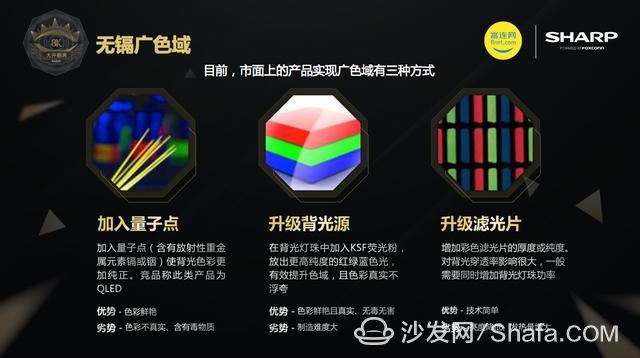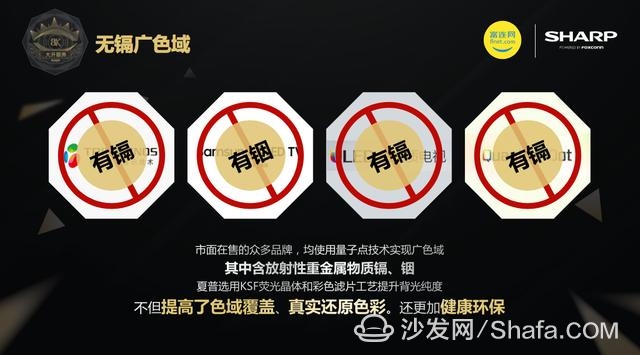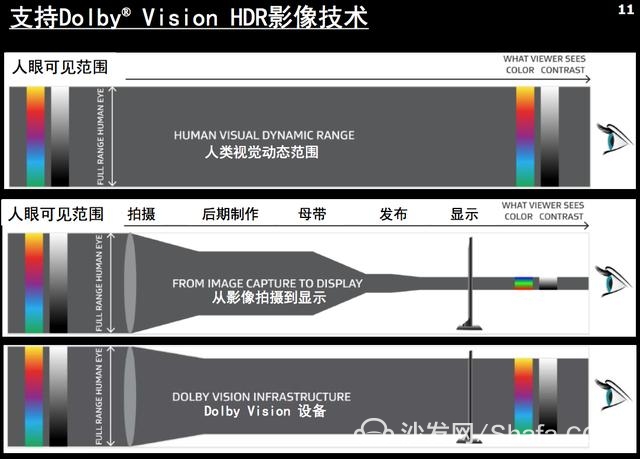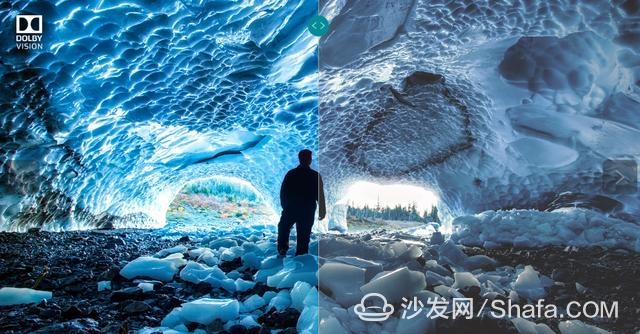Today we take Sharp as an example of the 8 Series TVs in the AQUOS series to see what black technology is on TV today.
Panel: 70 inches + 4K resolution + near-borderless industrial design
Sharp despises that the AQUOS TV adopts a Japanese original LCD panel with a size of 70 inches, a border of only 1.6 millimeters, a resolution of 4K (3840*2160), 4 times the resolution of 1080P, and an optimal viewing distance reduced to 3 meters. Within, even if you are closer to the TV will not easily feel the grainy.

Color display effect: HDR + color
A friend who sells TVs in the mall told me of such an example. On one occasion, he put two TVs in the store together, all with the same resolution of 4K, one with higher contrast and more precise colors. The result was passing by. Consumers generally think that the TV with higher contrast and more accurate colors is clearer.

This example may tell us, in addition to the resolution, TV can not bring people a higher visual impact, and its matching image quality adjustment technology is very positively related, higher contrast, wider color gamut, and more precise colors Only by touching people's hearts.
Nowadays, with the blooming of 4K TVs, perhaps when we select televisions, we should not blindly focus on the resolution of TV. Let's look at the comprehensive visual experience it brings in terms of contrast, color gamut, and brightness.

In this respect, Sharp's defiant performance of AQUOS TV is very eye-catching. With the support of Sharp Color Technology and HDR, Sharp brings more realistic display and excellent picture quality. If you have a certain pursuit of the quality of the TV, I think you should be interested in understanding Sharp's "huangcai technology" and HDR.

To interpret color, we should start with the principle of television's visualization. Taking the current LCD TV as an example, the LCD panel is a key part of the TV picture quality. However, if you want the TV to display images, the LCD panel alone is not enough. It requires an additional backlight source to drive.
The key to realizing the color technology is to control the backlight. By analyzing the screen of the TV, the backlight of different contents on the screen is adjusted in a targeted way, so that the brightness of the backlight in the dark is reduced, and the brightness of the backlight in the bright place is improved. The advantage is that the darker colors become darker, more layered, and brighter and fuller, which further enhances the contrast of the picture.

In fact, the concept of huangcai technology is similar to that of HDR, but this only solves the problem of backlight dynamic brightness control in the display area. If you want to make the picture quality of your TV even more amazing, you also need to increase the breadth of color gamut.
At present, there are three solutions to enhance the color gamut of television. One is to add quantum dots technology, one is to upgrade the backlight source, and the other is to upgrade the filter. However, no matter what kind of scheme, there are disadvantages. Take quantum dot technology as an example. It has radioactive heavy metal elements** and is not environmentally friendly.

So how does Sharp solve it? It combines the latter two solutions and uses KSF fluorescent crystals and color filters to enhance the purity of the backlight. It not only improves the color gamut, but also actually restores the color, and it is also healthier and more environmentally friendly.

In addition, Sharp also supports Dolby Vision. We all know that the current HDR has two major standards in the industry:
HDR 10 and Dolby Vision. Both of these have been proven to provide a wider range of visual dynamics in standard definition.

Simply put, Dolby Vision-compatible TVs can make the picture darker in dark areas, brighter in bright areas, and display natural color transitions at light and dark junctions. This vision dynamic range of video shooting is retained to a greater extent. For example, it can show deeper levels of red, green, and blue. These deeper primaries can form rich, detailed, and visually stunning images.

In other words, Sharp's deception of AQUOS TV can bring a better cinematic visual experience than ordinary 4K HDR TVs thanks to the support of Huang Cai and HDR. But the question is, what if there is television and there is no content that matches the excellent quality of the TV?
In fact, you don't have to worry. Thanks to Huangcai technology, Sharp can achieve HDR effect by ignoring the AQUOS TV dongle source. That is to say, even if you use this TV to look at the childhood version of Journey to the West, Huangcai technology can also analyze signals. Source to control the level of detail in the light and dark areas of the screen, resulting in better display.
After reading these black technologies in one breath, I feel deeply! Bright! feel! Li! In fact, the progress of science and technology are all for a better life. For example, the highest realm of ShaiTu is to invite friends to gather in circles at home, put a circle of friends and photography contests on TV, and give you a praise, or when you are envious of others. If you don't want to go to the gym for a good figure, then this TV can also be converted into a personal training to help you keep a good figure.
Smart TV/box information can focus on smart TV information network sofa butler (http://), China's influential TV box and smart TV website, providing information, communication, TV boxes, smart TVs, smart TV software, etc. Answering questions.OLED is organic light-emitting diode (D1de), which has the characteristics of self illumination, high brightness, wide viewing angle, high contrast, flexibility, low energy consumption and so on. Therefore, it has been widely concerned. As a new generation of display mode, it has gradually replaced the traditional liquid crystal display, and is widely used in mobile phone screen, computer display, full-color TV and so on. OLED display technology is different from traditional liquid crystal display technology. It does not need backlight. It uses very thin organic material coating and glass substrate. When there is current passing through, these organic materials will emit light. However, as organic materials are easy to react with water vapor or oxygen, OLED displays have high requirements for packaging.
Package Locating OLED Cover Glass,High Precision OLED Cover Glass,Special Desiccant Installed OLED Cover Glass
SHAOXING HUALI ELECTRONICS CO., LTD. , https://www.cnsxhuali.com
